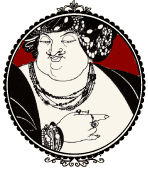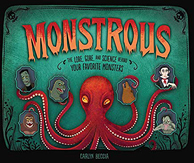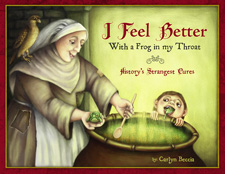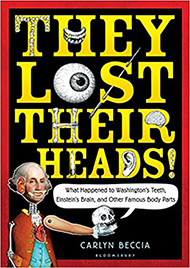
Its Origins
Contrary to the popular myth, there is no proof that Julius Caesar was born through c-section or that the operation was named after him. My guess is that the myth became so widespread because many ancient gods were believed to be cut from the wombs of their mothers. Julius Caesar would have certainly preferred a godlike birth, but it is highly unlikely given the fact that his mom survived his delivery. Some historians believe that the c-section’s origins can be traced back to a royal decree issued by Numa Pompilius in 700 BC called Lex Caesare. Lex Caesar stated that if a mother was dead or dying that the baby should be cut from her womb. Another theory states that the origin of the word is derived from the Latin verb caedere which means “to cut.”
Surviving a C-section

Today, c-sections rarely lead to the death of the mother, but before the 1900s, the odds of a woman surviving an infection and the hemorrhaging were slim to none. Often, a cesarean came down to a painful decision of who should live – the mother or the child. The Catholic church favored the child reasoning that a baby needed to be baptized. Even as late as 1930, Pope Pius XI decreed that doctors could not take a baby’s life to save the mother. We can imagine what a painful decision it would have been for a Catholic father forced to choose his unborn child over his wife.
The cesareans of the past also would not have involved the small “bikini cut” that we see today. Surgeons of the past carved a woman up like the Christmas turkey often making vertical cuts that extended as high as the ribs and resulted in the intestines spilling out. Some doctors cut diagonally. Others surgeons just made multiple cuts until they were able to pull the baby out by its feet.
Post-op procedures were not for the faint of heart either. During the Renaissance, a woman inserted a linen pessary of rose oil and egg yolk into her vagina three times a day. Rose oil does have healing properties, but it wouldn’t have done much to fight an infection. Another common procedure was to attach leeches to where a woman was cut or if she had given birth naturally to her perineum. And the popular panacea of bloodletting was also commonly used to reduce fever. (a subject for another day).
 The other option
The other option 
All of this may sound pretty horrific until you consider what was done in place of cesareans. When a baby was in breech and could not be delivered, doctors would perform an embryotomy in which they would take a long hook and tear out the baby piecemeal. Sometimes tiny shoulders and limbs were broken to get the baby out. When Catherine de Medici gave birth to twin girls, one of her baby’s legs had to be broken in order to get her out. (Both babies died.) Even more disturbing, if the baby was stuck with his head down then a craniotomy was performed in which the surgeon would drill into the fetal skull.
I am still terrified of c-sections, but I may not have the option if my recent ultrasound is correct. My doctor is predicting a 10 pound baby if I go full term and unfortunately I was cursed with those boyish tiny hips.
I am off to find a really bumpy road instead…
Sources and Further Reading:
Cassidy, Tina. Birth: The Surprising History of How we are Born, New York, NY: Altantic Monthly Press, 2006.Gelis, Jacques. History of Childbirth: Fertility, Pregnancy and Birth in Early Modern Europe, Polity Press, 1996
Images from the Wellcome Library












8 comments:
Wow, a ten pound baby? Ouch. Thanks for this wonderful post. I can't imagine what it must have been like for women before the 19th century, who had to have a caesarian. Thank god for modern medical science.
Stories like these make me cringe like there's no tomorrow - and thank my lucky stars that I don't ever want children!
My grandmother carried nearly 19 lbs baby to term in the late 40's or early 50's, but lost it and it had to be extracted in a way not entirely dissimilar to your description there. Awful! Pregnancy is just about the scariest thing there is (although I also hear it's beautiful)!
Like I commented on your last post, I know tht if I had tried giving birth to my 9 lb 12 oz baby in the past, it would have been a terrible, terrible situation. The thought of my child being extracted from me turned my stomach and made me cry.
Honestly, c-sections are kind of scary, but not worth the nightmare that some websites paint it as: "YOU WILL DIE! YOUR BABY WILL DIE! IF YOU HAVE A C-SECTION!" If it comes down to a c-section, put your faith in your doctor, say a little prayer (even if it's not your "thing"), and await the awesome sound of your child crying.
A ten pound baby is scary no matter if you are thinking about a c-section or not! I loved this post, very informative and interesting.
just had my second baby by cesarean.10 pounds 11 ounces, thought baby no.1 was big at 10 pounds 4 ounces, i laboured for 18 hours before having an emergency cesarean. it was all planned this time, we are so lucky to live in this day and age. i too cried at the way they would extrect babies.
Congratulations! Yes, I would have to say that childbirth is one the scariest thing of the past. 1/2 of us wouldn't have survived childbirth without modern medicine.
Thanks for sharing these important images from the Wellcome Library collection. C-section before the 16th century was always on a *dead* woman: there was no choice between mother and child since the mother would have already died. And even the child wasn't usually expected to survive. C-section was done to bring it out so that it could be baptized, or because of inheritance concerns.
https://www.youtube.com/watch?v=o5V723E9wvE
Post a Comment